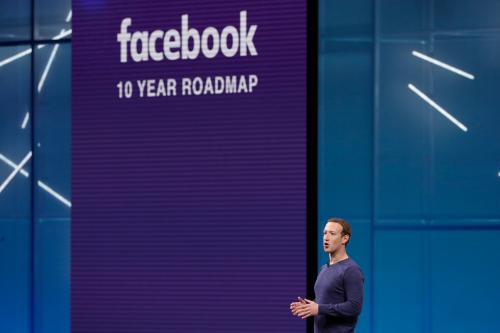The ramifications of Russian exploitation of social media exceed its potential electoral impact. It even exceeds the involvement of the Russians. The broader ramifications are how social media algorithms divide us, how those divisions can be exploited, and whether there are solutions.
Technology and capitalism have combined to deliver us to a decidedly undemocratic outcome. The internet was once heralded as the great democratizing tool. That vision was smashed by the algorithms of the social media platforms. By fracturing society into small groups, the internet has become the antithesis of the community necessary for democratic processes to succeed.
This is bigger than the current discussion of political advertising rules for the internet. The questionable ads and postings are the result of the problem, not the cause of it. That problem is how the software algorithms that determine what you see on social media prioritize revenue over veracity.
An algorithm is like a recipe describing how to combine various inputs to produce the desired output. For this cake, the eggs, flour, and milk are the digital information collected about individuals, the nature of the information being disseminated, and a description of the target audience.
The algorithms that power the social media platforms are designed to produce maximum user attention. Holding the user’s attention for as long as possible expands the site’s opportunities to deliver revenue-producing advertising. To attract and then keep the user’s attention, the algorithms are programmed to deliver content the user likes.
Algorithms got us into this situation. Algorithms must get us out.
In social media parlance, identifying users who like similar content is described as assembling a community. In reality, these groups are the un-community. Algorithms deliver only what they want to see, creating silos of prejudices and preferences that tear at the collective fabric required for a representative democracy. As the Russians demonstrated, organizing Americans into self-reinforcing echo chambers is ripe for exploitation.
Algorithms got us into this situation. Algorithms must get us out.
Today, the software algorithms that create social media news feeds are black boxes; we have no idea what goes into them or what comes out and why. My friend and Harvard colleague Wael Ghonim has proposed opening that input/output information as “public interest APIs” (Application Programming Interface), a common software practice that allows third-party access to information. It doesn’t open the algorithm itself, or the privacy protections of users, but it does capture select inputs and outputs of the algorithm.
An example of how this works is Google Maps. This algorithm-driven mapping software is open for use by other applications. Uber, for instance, uses Google Maps’ open API to provide directions to the pick-up point and destination. It is not Uber’s mapping algorithm, but Google’s open API that allows Uber to then build location-based algorithms for their proprietary functions.
Using a similar open API, it becomes possible to build public interest algorithms to monitor and report on the effects of social media algorithms. Humans cannot keep pace with the speed with which these algorithms make content distribution decisions. It takes only minutes to create a new social media post, and seconds to distribute it to the world. To discover that such distribution has occurred and respond factually, however, can takes hours or even days.
A public interest algorithm can do just what the social media algorithms do: assess at computer speed the information coming in and where it is going. Openly available to all (and perhaps even a reference app on the social media platforms themselves), a public interest algorithm can provide awareness of and access to the information behind any posting. Such sunlight will not only expose any propaganda, but also will help independent evaluation of the veracity of the information being delivered.
Today, public interest groups of all political stripes monitor the mainstream media. With a public interest API they could also built public interest algorithms to accomplish the same for social media. To date, algorithms have been problem-creators. It’s time for social media open APIs to enable problem-solving through public interest algorithms.






Commentary
Using “public interest algorithms” to tackle the problems created by social media algorithms
November 1, 2017